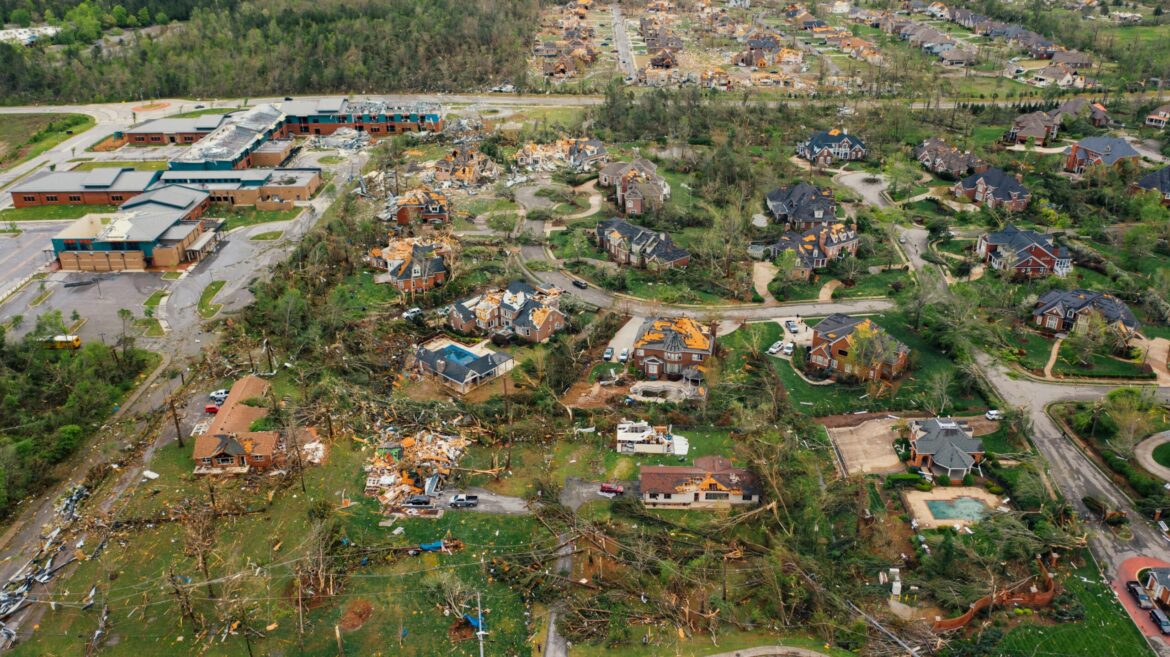“`html
Catastrophic Tornado Outbreak in Central Texas: A Day of Destruction and Resilience
On March 7, 2024, Central Texas experienced a devastating tornado outbreak that resulted in widespread destruction, numerous injuries, and fatalities. With at least six confirmed deaths, this severe weather event has been recognized by meteorologists as one of the most catastrophic in the state’s history. The storms, which produced over a dozen tornadoes across various counties, particularly impacted the cities of Waco, Temple, and Killeen, where neighborhoods were significantly leveled.
The Path of Destruction
The National Weather Service (NWS) reports that multiple tornadoes in this outbreak reached EF-3 classification or stronger, with wind speeds exceeding 140 miles per hour. The most powerful tornado carved a damaging 15-mile path through Waco, obliterating homes, schools, and local businesses. Eyewitnesses like resident David Ramirez conveyed the harrowing experience, describing the aftermath as resembling a “war zone.” Many families found themselves displaced as they returned to find their properties completely destroyed.
Casualties and Injuries
By Thursday evening, local authorities had confirmed six fatalities, with expectations of a higher count as ongoing search efforts continue. Over fifty individuals were hospitalized, suffering from a range of injuries that varied from minor cuts to severe trauma. Fire Chief Alan Davis of Waco emphasized the urgency of rescue operations, indicating that time is critical in such desperate situations. Emergency shelters have been established for displaced residents, with volunteers working tirelessly to provide essential necessities like food, water, and medical supplies.
State and Federal Response
In response to this tragic event, Governor Greg Abbott activated the Texas National Guard to aid in rescue and recovery efforts. Regarding the scale of the disaster, Abbott described the situation as a “tragedy of unimaginable scale.” He assured the public that Texas would stand together in this crisis and promised that every resource would be dedicated to rebuilding. On a federal level, President Joe Biden pledged assistance, instructing the Federal Emergency Management Agency (FEMA) to coordinate and assess recovery efforts. Preliminary estimates suggest that the financial implications could surpass $1 billion.
Impact on Infrastructure and Economy
The tornadoes’ impact extended beyond loss of life and injury; they also severely disrupted local infrastructure and utilities. Major highways, including sections of Interstate 35, were temporarily closed due to debris, leaving thousands of residents without power or access to clean drinking water. The agricultural sector bore a significant brunt, as farms and livestock facilities in rural areas sustained extensive damage. Economists have warned that the storm’s repercussions could create widespread economic challenges across various industries, including retail, construction, and transportation.
Community Resilience and Recovery
Amid the destruction, remarkable stories of resilience and kindness have emerged from within the affected communities. Neighbors have rallied to support one another by clearing debris and offering makeshift shelter. Local businesses are stepping up, providing meals and supplies to those in need. Temple resident Sharon Douglas encapsulated the spirit of the community, stating, “We’re heartbroken, but we’re also Texans. We know how to come together and rebuild.” This sense of solidarity will play a crucial role in recovery efforts.
Looking Ahead
As meteorologists continue to monitor weather conditions, the forecast predicts additional storms may impact the area later this week. Authorities have strongly advised residents to remain vigilant and to take all weather warnings seriously. As Texas begins the arduous road to recovery, the recent tornado outbreak serves as a sobering reminder of the importance of preparation for extreme weather events.
Conclusion
The catastrophic tornado outbreak in Central Texas on March 7, 2024, has left the region grappling with tremendous loss and ongoing recovery efforts. As individuals and communities come together to support one another, it underscores the strength of resilience in the face of adversity. While the immediate focus remains on rescue and relief, future preparedness will be essential to mitigating impacts from similar natural disasters.
FAQs
What areas were most affected by the tornado outbreak?
The cities of Waco, Temple, and Killeen experienced the most significant destruction, with entire neighborhoods leveled and critical infrastructure damaged.
How can individuals help those affected by the tornadoes?
Individuals can assist by donating to local relief organizations, volunteering at shelters, or providing meals and supplies to displaced residents.
What safety measures should residents take during severe weather events?
Residents are encouraged to stay informed through weather alerts, have emergency plans in place, and identify safe shelter locations prior to storms.
What support is available for families who lost homes during the tornado outbreak?
Emergency shelters have been established, and organizations are distributing food, water, and medical supplies. Local government and relief agencies will also provide assistance for rebuilding efforts.
What is the expected timeline for recovery in the affected areas?
The timeline for recovery is uncertain and will depend on the extent of the damage, the speed of the removal of debris, and the availability of resources for rebuilding.
“`

